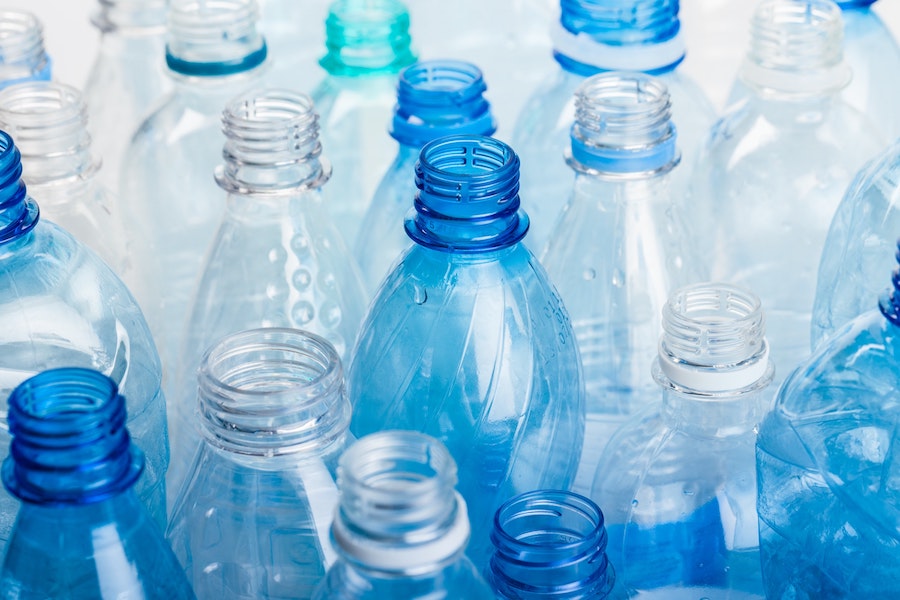What is BPA and should you actually be worried about it?
A no-nonsense guide to the issue
Making use of an old plastic water bottle at the gym or carrying your lunch in a reusable takeaway curry container feels like a satisfying route to helping the environment. After all, you’re making an effort to cut down on single-use plastics and you’re doing your bit to keep man-made materials out of the ocean.
But some health experts have raised concerns about a chemical in plastic called ‘BPA’ that could be harmful to health, warning that we need to be careful of the types of materials we continue to eat and drink out of.
With single-use plastics still on sale in supermarkets though, should you actually be concerned? Here’s everything you need to know…
What exactly is BPA?
Bisphenol A (BPA) is an industrial chemical that’s used to harden plastic during production. It’s most commonly found in transparent polycarbonate plastics such as some food containers, drinks bottles, baby bottles, tablewear and lunchboxes.
It’s also utilised as a protective coating in some canned foods and on the smooth side of shop receipts. As it’s been in use for decades, BPA is everywhere and it’s difficult to avoid coming across it in day-to-day life.
What’s the issue?
Studies have found that BPA can leak out of certain plastics and into our food, especially when they are heated. While it’s worth noting that the science is not yet completely clear on how BPA may affect humans, one Harvard study linked exposure to fertility problems and other conditions.
BPA is thought to be an endocrine disruptor, which means it can imitate the body’s hormones. Some research has suggested that it may interfere with puberty, the menopause or cause cancers that are related to hormones. However the research can be difficult to read, as alterations in the endocrine system can be subtle and hard to attribute to a specific cause.
Even though some studies have found certain chemicals in plastics can end up in things we may eat and drink, many food agencies say that because the levels are low, they are within a range considered safe to humans. This is why BPA options are still available to buy.
However, there is a growing call for governments to stop manufacturing plastics with BPA and seek out alternatives instead, suggesting that BPA may be a factor in the rising number of human illnesses. This is why you’ve probably seen lots of ‘BPA-free’ options popping up in shops and supermarkets.
While the federal Food and Drug Administration in the US has not named BPA as harmful, it did take the precautionary measure of banning BPA from baby bottles and sippy cups back in 2012. Businesses in the state of California are also now required by law to provide warnings for products that expose consumers to significant amounts of BPA.
If I wanted to, how do I avoid BPA?
Plastic and aluminium is everywhere we look, so it’s not easy to avoid BPA, however there are some steps you can take to reduce your exposure if you wish to.
Do away with the flimsy plastic bottles and purchase a BPA-free, glass or stainless steel water bottle. The same goes for reusable coffee and tea mugs too.
Instead of plastic Tupperware, store food in glass or silicon containers and opt for fresh or frozen veggies instead of canned.
Studies have suggested that heating plastics can cause BPA to further leach, so keep your plastics cool. It’s also a good idea to cook from scratch. Not only is it healthier and cheaper than eating processed foods, but you’ll also avoid lots of unnecessary packaging too.
The Press Association
Latest posts by The Press Association (see all)
- The Osmonds star and ‘beloved husband and father’ Wayne Osmond dies aged 73 - January 2, 2025
- What screenings are available on the NHS to detect cancer early? - January 2, 2025
- Help your grandchildren make the most of Big Schools’ Birdwatch - January 1, 2025
- Veteran radio star Johnnie Walker dies aged 79 - December 31, 2024
- 5 fantastic winter walks for wildlife spotting - December 31, 2024




















